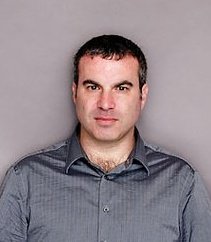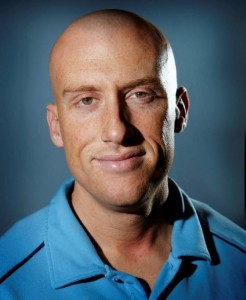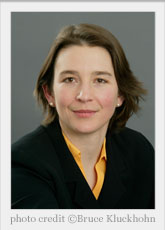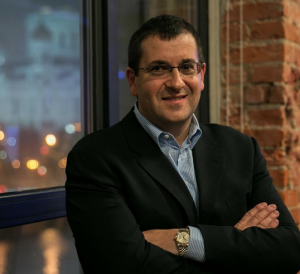By Matt Ranen, on Thu Aug 14, 2014 at 1:30 PM ET  Public debates about policy often focus on trying to explain why a particular approach will make the ‘whole system’ work better. Consider Obamacare: it’s supposed to insure the uninsured, improve the quality of care, and ‘bend the cost curve’ to reduce the costs. Or Education reform: the online MOOC is supposed to radically reduce the costs of education while scaling the very best teachers by orders of magnitude. It’s become almost a necessity of public debate—at least in the US—to assert that a big idea reform proposal is a ‘win-win.’ And to stand in opposition to this best-of-all possible worlds means you are either too dumb to understand or simply dishonest. Public debates about policy often focus on trying to explain why a particular approach will make the ‘whole system’ work better. Consider Obamacare: it’s supposed to insure the uninsured, improve the quality of care, and ‘bend the cost curve’ to reduce the costs. Or Education reform: the online MOOC is supposed to radically reduce the costs of education while scaling the very best teachers by orders of magnitude. It’s become almost a necessity of public debate—at least in the US—to assert that a big idea reform proposal is a ‘win-win.’ And to stand in opposition to this best-of-all possible worlds means you are either too dumb to understand or simply dishonest.
Would that it were so. This kind of thinking can be popular on the surface and it certainly makes for ‘provocative’ op-eds that garner lots of hits on newspaper websites. But it doesn’t serve the public interest, isn’t good for business-government relations, and is not a good way to work with other stakeholders that will have to be involved. Ironically, it gets in the way of both the technical and social innovation it is trying to foster.
Here’s why. Almost every big public policy debate is ultimately an argument about the aspirations and visions we have and how we want our society to ‘look’. Implicit in this is a decision about the tradeoffs we are willing to make to get there and the effective winners and losers of policy decisions. The win-win discourse tries to push what are in fact deep disagreements about this into the background where no one has to look too closely.
We get the motivation. It’s certainly comforting and easier to claim that everyone can have better, cheaper healthcare distributed more fairly and no one will lose anything in the process. But look beneath the hood and the supposed cost savings in the short and medium term depend heavily on cutting Medicare reimbursements to doctors. And that doesn’t happen: every year, like clockwork, Congress postpones those cuts. So we don’t actually face the trade-offs, but rather, push them off into some unspecified future.
Or elsewhere, in the current debate over Internet traffic rules: it’s much easier to assert that net neutrality makes the Internet better on all dimensions—more open, more free, more secure, speedier, and more fair to newcomers—until someone points out that they didn’t have sufficient bandwidth to get the SuperBowl on their iPad, watch the opening episode of Game of Thrones without disruption, or get high quality FaceTime streaming with their grandma, even though they paid for this. If only we could have our broadband cake and eat it too.
It takes courage on the part of business leaders and public policy makers to put these kinds of trade-offs in the foreground. But here’s the twist — we think this would actually be very good news for innovation. Figuring out how to compensate or reduce the pain to losers is actually one of the most significant drivers of innovation because it forces real choices from which new value springs. If Comcast is simply evil and Google is simply good, then it feels like a win-win to force Comcast into being a dumb pipe for Google content. But dumb pipe companies won’t (indeed, can’t) invest very much in new infrastructure and new services. So a better solution might also include incentives or requirements for the ‘good’ companies to deliver their content and services with radically greater efficiency: using 1/10 or 1/100 of today’s bandwidth—which in turn would open up the remainder for new applications from brand new content innovators.
Putting trade-offs in the foreground doesn’t offer the cheap thrill of demonizing certain companies in the ecosystem — the health insurers, the broadband providers, the for-profit education companies, and so on. But it’s more honest and ultimately better for innovation and growth. And it may actually lead to a more stable profit margin over the long run for those companies who are wise enough to not create a desperate, and possibly angry, set of losers later on.
By Josh Bowen, on Thu Aug 14, 2014 at 8:30 AM ET  As I sit here on my 2 day vacation in Myrtle Beach, South Carolina I have to remind myself of the importance of rest. As most know, I will push myself to limit everyday, sometimes working 7 days a week and working out 6-7 days. Rest has not been my best friend, but thankfully I have great people around me who encourage that I take a break. And that break was must needed. For the last 2 days, I haven’t done much of anything besides walk the beach, work on my tan and disconnect from everything. It is a great feeling, every once in a while. As I sit here on my 2 day vacation in Myrtle Beach, South Carolina I have to remind myself of the importance of rest. As most know, I will push myself to limit everyday, sometimes working 7 days a week and working out 6-7 days. Rest has not been my best friend, but thankfully I have great people around me who encourage that I take a break. And that break was must needed. For the last 2 days, I haven’t done much of anything besides walk the beach, work on my tan and disconnect from everything. It is a great feeling, every once in a while.
Not only did my mind need a breather, my muscles did as well. For the better part of 15 years, I have consistently worked out, 6-7 days a week. However, lately injuries have mounted. My biceps tendon was an issue for 2 weeks, then it was my hip. After resting the past few days, my aches have subsided. My body was telling me to take a break. And for the first time in a while, it got it.
So here are three components of rest we must remember to take our bodies and our minds to the next level:
1. Sleep- helps the brain commit new information to memory through a process called memory consolidation. In studies, people who’d slept after learning a task did better on tests later. While lack of sleep can have dire consequences, adequate sleep provides only positive, healthful benefits. In a typical day, a person’s waking hours are consumed trying to meet the many mental and physical demands encountered at every turn, as well as replenishing vital nutrients as they are being used up during these daily activities. In the hours remaining during sleep, the body takes time out to rebuild and recharge, preparing for the day ahead. PLUS…your body only changes when you sleep, so no sleep equals no change. 7-8 hours is recommended.
2. Relaxation- in addition to sleep, your body and your mind needs to relax. Working out hard is great but you cannot take your body to limit all the time. Taking a day off to recoup is a great idea. Listen to your body, it will tell you where to go and what to do. Yoga and meditation are great relaxation techniques to put you in a great mood and keep your body changing and results coming.
3. Recovery- can encompasses the 2 above but I would also like to include the nutritional aspect. Adequate amount of protein, healthy fats and vegetables should be used to help recover your muscles to go again. Remember muscles don’t grow and body fat does not disappear during exercise. It is during the recovery phase that changes happen.
We we all work hard and sometimes forget to take care of ourselves. Just remember this equation: Work + Rest= Success.
By Will Meyerhofer, on Wed Aug 13, 2014 at 1:30 PM ET  Spectating upon the atom bomb ignition at the Trinity test site in New Mexico, Robert Oppenheimer was reminded of a scene from the Bhagavad-Gita – an encounter between the prince and Vishnu, the latter apparently in a cranky frame of mind. The scene culminates in Vishnu, who is attempting to persuade the prince to do his duty, assuming a multi-armed form and intoning: Spectating upon the atom bomb ignition at the Trinity test site in New Mexico, Robert Oppenheimer was reminded of a scene from the Bhagavad-Gita – an encounter between the prince and Vishnu, the latter apparently in a cranky frame of mind. The scene culminates in Vishnu, who is attempting to persuade the prince to do his duty, assuming a multi-armed form and intoning:
I have become death, destroyer of worlds.
There are lawyers out there who remind me of Vishnu in his multi-armed form. No, they don’t sprout extra limbs, or destroy entire worlds. These Biglaw-inspired incarnations of Vishnu merely assume the form of senior female attorneys to become career-death, destroyer of junior associates.
Behold the Biglaw Vishnus! (And trust me, within their personal sphere of destruction they give the real thing a run for his money.)
One of my clients fell victim to a Biglaw Vishnu – and his story is, as they say, far from atypical and so merits recounting.
He went, if not to a first-tier school, then to a first-and-a-half tier school, and by some rare stroke of fortune managed to locate a job, (if not at a first-tier firm, then at a first-and-a-half tier firm.)
It’s fair to say this guy was riding high – and gloating appropriately – when he happened to notice a problem: The firm had no work. His response was the same as everyone else’s around him – he twiddled his thumbs, wondering if he somehow smelled funny, or if, in fact (as it appeared) everyone else was twiddling their thumbs too (all while studiously pretending to be busy busy busy.) That situation endured for a year and a half, until my client was rudely stirred from this idyll by a partner, who delivered to him an awful review of the obviously-staged variety. (My client can’t remember if the problem they identified was that he asked for help too often instead of showing initiative or asked for help too rarely and wasted time by being too independent. He hadn’t billed an hour for months so he could hardly blame them for making something up.) As they say in California, “whatevers.” There was, however, a modicum of “fall-out.” Icarus-like, my client found himself plummeting in the unmistakable direction of every lawyer’s ultimate nightmare (at least officially): Unemployment. We all know the rules of this profession – five minutes of unaccounted-for time on your resume and it’s game over; you’ll never work as a lawyer again (well, maybe a staff attorney or doc reviewer but that hardly counts, does it?)
My client had three months to drum up a miracle. Following the world’s most intense job hunt, something came through at the eleventh hour. But there was a catch: He had to work for Vishnu.
Read the rest of…
Will Meyerhofer: Encountering Vishnu
By Lauren Mayer, on Wed Aug 13, 2014 at 8:30 AM ET As I approach the 2-year anniversary of my weekly song project, it’s fascinating to look back on how my writing process has developed, and to see what lessons I’ve learned. So here are a few tips to share with any readers who are either contemplating a creative venture (or who would enjoy a vicarious peek at something they’d rather not experience first-hand . . . .)
– Writing is frequently 1% inspiration and 99% putting-your-rear-in-a-chair. In other words, the best way to learn to write is to write. (My 8th-grade English class was fortunate enough to meet with Ray Bradbury once, and he shared his practice of forcing himself to write 10 pages every single day – sometimes those pages consisted of “I have nothing to say” over and over again, but with enough repetition, he would eventually come up with something usable.)
– Give yourself permission to write crap. It’s always easier to edit than to start from scratch, but it’s almost impossible to come up with anything if you are afraid it won’t be fabulous.
– Be open to inspiration from unexpected places. Sure, some weeks have a fabulous, everyone’s-talking-about-it story, which is how I came up with “Oh Won’t You Put Me In Your Binder Full Of Women.” (And the fact that you probably get that reference, nearly 2 years later, shows you how memorable that story was.) But there are definitely weeks I find myself thinking “oh, crap, what am I going to do this week?,” and then when I’m not looking for it, an idea will pop into my head. (For example, after Dick Cheney started popping up on news shows, plugging his ‘let’s-bomb-everyone’ website, I heard my husband & son in yet another volley of sophomoric, off-color jokes, and that inspired “I’m Sick Of Dick”.)
– And be open to suggestions – especially when you have a deadline. I am fortunate to have some wonderful subscribers & supporters, who occasionally send me ideas. I can’t always use every one, but my friend Lucien, who is the web designer for The Political Carnival, sent me the inspiration for this week’s song:
By Brooke Masters, on Tue Aug 12, 2014 at 1:30 PM ET  Slowly, ever so slowly, banks are being forced to clear away the fog and mirrors that have protected their balance sheets from the prying eyes of investors and sceptics. Slowly, ever so slowly, banks are being forced to clear away the fog and mirrors that have protected their balance sheets from the prying eyes of investors and sceptics.
Last month, UK banks became the first in the world to disclose their total borrowing, known as leverage ratio, on a standardised basis.
They haven’t done this willingly – the Bank of England insisted – and their disclosures are all surrounded by lots of hemming and hawing about how the leverage rules are still changing.
The results are instructive. The UK’s five biggest banks are considered among the best capitalised in Europe on the traditional measure of core tier one equity divided by risk-weighted assets, which includes everything from home mortgages and small business loans to complex derivative contracts, each multiplied by a factor intended to reflect the amount the bank could lose. The ratios range from 12.3 per cent at HSBC down to 10.3 per cent at Royal Bank of Scotland.
The disclosed leverage ratios strip out the effect of risk modelling, which has the effect of more than doubling the size of every bank’s balance sheet and more than tripling that of Barclays. These numbers partly reflect the size of low-risk, high volume businesses. But they will be a boon to critics who think some banks have been tweaking their models to cut their capital requirements.
Read the rest of…
Brooke Masters: The Leverage Story Banks Want to Hide
By Erica and Matt Chua, on Tue Aug 12, 2014 at 8:30 AM ET This was our second Great Walk in New Zealand. Click here to read about the Milford Track, New Zealand’s most famous hike.
Inscribed on almost every “World’s Best” hikes list is the Routeburn Track in New Zealand. All too often the reality fails to meet the hyped expectations, but Routeburn does not disappoint. From start to finish the trail wow’s you so much that the work of hiking is forgotten.

The sun rising outside the Routeburn Falls Hut, a fine start to our final day on the track. This is a view hikers traveling in the traditional, Queenstown to Te Anau, direction are given on their first day.
Having completed the Milford Track just days earlier we chose to hike in the opposite direction of most, starting from Te Anau and hiking towards the comforts of Queenstown, the de facto capital of New Zealand tourism. We had been discouraged by the weather report in the Department of Conservation office: freezing temperatures and snow at the level of the campsites.
Traveling with $25 warm-weather sleeping bags and yet to rent a tent, news of snow was unwelcome. Given our experiences with rental tents we made the expensive decision to change from camping to staying in hut dormitories. Even though the huts were listed as booked we learned that there are a couple extra beds always available for a difference of $36 NZD ($28 USD) per person ($54 NZD for huts versus $18 NZD to camp in high season). Being budget travelers as we are, we lamented the cost, but decided that if greeted by rain, snow and freezing temperatures, this was the right move.
Read the rest of…
Erica and Matt Chua: Hiking the Routeburn Track
By David Goldberg, on Mon Aug 11, 2014 at 1:30 PM ET “He’s got pretty persuasion. She’s got pretty persuasion. Goddamn, your confusion.” Pretty Persuasion – REM
 Interviews can be deceiving and confusing. When you meet a candidate in person, you can get a lot of false positives. The candidate is on her best behavior, well prepped and aiming to sell you on herself as a great hire. Often, you will find yourself enjoying your conversation enough that you get persuaded to hire someone who really isn’t the right fit for the role. That is why I believe interviews are for weeding people out but real references are the best barometer for making a job offer. I have learned this through years of experience and mistakes. My friend Thomas Layton, the former CEO of OpenTable and current Chairman of Odesk, helped me confirm this approach when I started at SurveyMonkey in 2009. Interviews can be deceiving and confusing. When you meet a candidate in person, you can get a lot of false positives. The candidate is on her best behavior, well prepped and aiming to sell you on herself as a great hire. Often, you will find yourself enjoying your conversation enough that you get persuaded to hire someone who really isn’t the right fit for the role. That is why I believe interviews are for weeding people out but real references are the best barometer for making a job offer. I have learned this through years of experience and mistakes. My friend Thomas Layton, the former CEO of OpenTable and current Chairman of Odesk, helped me confirm this approach when I started at SurveyMonkey in 2009.
 In my early days at SurveyMonkey, 100 percent of my time was spent on HR-related issues, specifically recruiting. At the time, SurveyMonkey was 14 people in Portland– my first priority was to scale the team. From a small office in Menlo Park, California, I had to find and hire talent. I had to interview everyone personally and make most of the decisions myself. In my early days at SurveyMonkey, 100 percent of my time was spent on HR-related issues, specifically recruiting. At the time, SurveyMonkey was 14 people in Portland– my first priority was to scale the team. From a small office in Menlo Park, California, I had to find and hire talent. I had to interview everyone personally and make most of the decisions myself.
This meant tracking down and calling real references – a job most delegate to HR. I don’t think you learn much from references listed by the applicant. Those people are clearly going to say good things. You need to get real information from someone who you trust. Most of the people we hired in the beginning were two degrees away- that is, they were referred or connected to someone I knew. This allowed for honest feedback on the candidate’s strengths and weaknesses. If we didn’t have that direct reference to talk to, I used LinkedIn to find people who had worked with the person. Each role was different but some things were universal. I needed people who could flourish in a startup like culture but could also understand how to scale. Would he be willing to do his own work or did he just view his role as a manager, telling others what to do? How did she solve scale problems when they occurred? You can ask candidates those questions but it is much more valuable to understand how the person actually behaved in real situations.
Cultural fit is also important and impossible to figure out in an hour interview. How does the person work with peers, manage people and deal with stress? You can ask your real reference those questions; get past the “pretty persuasion” of the interview. I learned the hard way that someone who looks great on paper may not fit with our culture. Their experience simply didn’t carry over to their job with us. It turns out that people with seemingly relevant experience just are not interchangeable. A person who was an all-star at one company might not be able to repeat that performance in your organization, because his success may have derived from relationships with the previous employer, or her team may have propelled her achievement.
On the other hand, many people may not have the experience you feel is required for a job, but are just really smart, talented and motivated. When you take a chance on these employees and get it right, they become home grown talent – essentially your farm team. These are likely to be the carriers of your culture, and some of the best, most loyal employees because you took a chance and developed them from within. I have found it has worked to have a mix of experience and raw talent- the two types learn from each other.
At SurveyMonkey, we’ve moved talented people within the organization to give them room to stretch and grow — finance folks to business development roles, customer ops to engineering. It is much easier to take a chance on someone who already has proven themselves for you in another role than bring an experienced outsider in- the internal hire has all the boxes checked except experience.
As the company has grown, my time spent on HR-related matters has shrunk. Still, nearly one-third of my responsibilities relate to talent and culture. We are a company that defines success by getting and keeping the right people. I still do my own calls for all key hires and look for good spots to build that farm team of great talent. Let resumes and interviews be used to reject candidates but rely on real references to hire people.
By Saul Kaplan, on Mon Aug 11, 2014 at 8:30 AM ET  Irwin Kula is an eighth-generation rabbi known for his fearless attitude about change — a rare quality among religious leaders who tend to adhere closely to tradition. Irwin Kula is an eighth-generation rabbi known for his fearless attitude about change — a rare quality among religious leaders who tend to adhere closely to tradition.
Kula, president of the National Jewish Center for Learning and Leadership (CLAL) in New York and the author of Yearnings: Embracing the Sacred Messiness of Life, has dedicated himself to opening up the wisdom of his 3,500-year-old faith to be in conversation with the world.
Kula preaches the “highest possible institutional barriers between church and state,” with the “lowest possible communication barriers.” He welcomes intermarriage and interfaith dialogue. He recognizes God not as a “Seeing Eye,” but in “experiences of love, caring, and connection.”
Many consider Kula progressive; others, disruptive. But Kula maintains that institutionalized disruption is essential to adaptation and growth.
Rabbi Kula looks like the wise man of children’s books. He has a handsome widow’s peak, and speaks with homiletic pauses and animated hands. When asked about how his beliefs developed, he answers in stories.
At 14, Kula was thrown out of the private parochial school he attended for challenging the Torah. “I would ask a class of 25 students questions which were probably a touch ‘teenagerish’,” he recalls. “I’d ask, ‘You don’t really believe this — God splitting seas? Come on, this is not what this is actually saying’.”
This rebellious streak would come to define his practice.
The problem with most religious leadership, Kula claims, is that its mission is to convert the non-affiliated. “Religion is not about creed, dogma, or tribe,” he counters. “We need to stop judging our success by membership dues — this isn’t about how many hits. First and foremost, religion is a toolbox designed to help human beings flourish.”
Kula claims that he finds himself often at odds with the concept of “God” as commonly invoked in the American public arena. To him, this is the God of touchdowns and wars, an intervening God who “casts out” unless one “buys in.” “No religious or political system has a hold on being moral,” Kula says. “Systems are only as good as their people.”
For most of his rabbinic appointment, Kula kept these views to himself. Only after the September 11 attacks did he begin to more openly preach what he himself practiced.
“I was very unnerved, knowing the religious impulse compelled that,” Kula says. After the tragedy, he shut down his teaching for three months to reevaluate his role as a spiritual leader. When he returned to the synagogue, he had made the decision “never to teach Judaism again simply to affirm the group’s identity.”
In 2013, Irwin Kula recounted the narrative of his spiritual conversion to a packed theatre of global business leaders at the Collaborative Innovation Summit, an event hosted annually by the nonprofit Business Innovation Factory (BIF) in Providence, RI. On stage, the rabbi made an ambitious appeal to his audience, whom he knew to be composed of astute tinkerers and serial entrepreneurs: He asked them to join him in his mission to innovate religion.
Kula is a fervent believer in accessing insight beyond the religious tradition. “It’s really important to speak to non-incumbents,” he maintains. “The less you speak exclusively to your own ‘users,’ the better shot you have of keeping your own practices from becoming incredibly distorted.” His CLAL runs a program called Rabbis Without Borders, dedicated to fostering open dialogue across cultural and religious barriers.
Stories of innovation often feature “two kids in a garage.” Kula’s goal has been to tell an innovation story from the cathedral. “Religion’s just a technology,” his BIF talk began. “How the hardware of humanity gets used will depend on the software.”
His talk covered how the rapid advancements of the digital infrastructure age demand that we broaden our ethical horizons: What are the new crimes? In this new order, who is included and what are their rights? As we redefine morality, the need to innovate faith becomes especially pressing.
“The most interesting businesses ask ‘impact on society’ questions, which are more complex than ‘killer app success’ questions,” Kula reflects in hindsight. “At BIF, I asked, ‘What would happen if we applied innovation theory to religion, to compress the resources it takes to create good people?’”
Kula looks forward to returning for BIF10 in September.
“If a homily is 15 minutes in church, it’s 18 minutes at BIF,” he says. “As conferences go, BIF embodies total equality between the storytellers and their audience. In many ways, it’s the best of what a spiritual community is — we’ve got to bottle that.”
This is the second of a 10-article series of conversations published on the Time website, authored by myself and Nicha Ratana, with transformational leaders who will be storytellers at the BIF10 Collaborative Innovation Summit in Providence, RI, on Sept. 17-18.
By Josh Bowen, on Fri Aug 8, 2014 at 8:30 AM ET  For most of my clients, Summer means t-shirt time. How does yours fit? Don’t laugh — even though it’s just a t-shirt, it should fit you as well as all of the other items in your wardrobe. Below are 4 key points to watch for when determining whether to buy that next beefy-t: For most of my clients, Summer means t-shirt time. How does yours fit? Don’t laugh — even though it’s just a t-shirt, it should fit you as well as all of the other items in your wardrobe. Below are 4 key points to watch for when determining whether to buy that next beefy-t:
 1) The shoulder seam should hit directly on the edge of your shoulder. When a t-shirt is too big, these seams hang off your shoulder and make you look sloppy. But wearing a shirt with the seam right on the edge of your shoulder will make you look fit and trim. 1) The shoulder seam should hit directly on the edge of your shoulder. When a t-shirt is too big, these seams hang off your shoulder and make you look sloppy. But wearing a shirt with the seam right on the edge of your shoulder will make you look fit and trim.

2) The length of your sleeve should hit about halfway down your bicep. Again, this will be the most flattering to your build.
 3) When you pinch the sleeve edge, there should be 1-1.5 inches of extra fabric. 3) When you pinch the sleeve edge, there should be 1-1.5 inches of extra fabric.

4) The hem of the t-shirt should hit about halfway down the fly of your pants. Any longer than that will throw off the balance of your upper and lower body (aka make you look short), and anything much shorter than that won’t give you enough coverage.
Now, it’s your turn. Try on your favorite t-shirt…how does it measure up?
By Josh Bowen, on Thu Aug 7, 2014 at 8:30 AM ET “To be yourself in a world that is constantly trying to make you something else, is the greatest accomplishment.”- Ralph Waldo Emerson

Recently I was reading an article I found on Facebook called “5 Regrets of Dying,” and the first regret was “I wish I’d had the courage to live a life true to myself, not the life others expected of me.” This got me thinking about life in general and how I see people who live their lives for someone else and not for themselves.
I can be accused, justifiably so, for being a workaholic and someone who is passionate and borderline obsessed with his work and craft. But I will say for all that I sacrifice; personal time, vacations, time with friends and family, I do my work, not because I have to but because I want too. I lead this life the way I want. Everything is my choice. Some people will love me and some won’t. That is the nature of life.
So putting fitness aside, I thought I would write about life in general. And pose the question to everyone; “Are you living to die or dying to live?” Here are five steps to separate yourself from everyone else and be who you are suppose to be:
1. Radical Self-Responsibility
We have become people who always point the finger at others. As to say it is always someone else’s fault or problem why we are where we are. At the end of the day, the responsibility falls on our shoulders. If you didn’t workout today, that is your fault. Manage your time better. In order to get out of the usual and become someone of distinct characteristics, we must take full responsibility for everything.
2. Stop Caring What People Think
Right or wrong we all care what people think of us…to a degree. I care what my family thinks of me. However, I do not let them sway me one bit. Some people will love you, others will not, stop caring what those who only want the worst for you, think. “Wolves do not fret over the onions of sheep.” Are you a wolf or a sheep? You pick?
3. Stop Being So Superficial
At the end of the day, we will all die and the way we looked or the things we had will not matter. What will matter most is the impact we had on the people we leave behind. Treat your body right but don’t obsess. Have nice things but realize they are only just that, things.
4. State Your Opinion
This is a difficult one. In today’s landscape, having an opinion can be looked at as a hindrance more than a benefit. However, I was always taught to stand up for your beliefs and to give your opinion if asked. To this day I do not shy from stating my opinion no matter how unpopular it is.
5. Realize Life Will be Over Soon
To quote a phrase, “I’m not here for a long time, I’m here for a good time.” None of us are here for a long time. We are given a certain amount of time on this earth and we must make the most of it. If you want to try something, go try it. You want to start your own business, go start it. Fear absolutely nothing and careless what anyone has to say about it. Leave a legacy someone could be proud of. It will make a vast difference in the world, trust me.
We were all meant to be extra-ordinary in our lives. But you can’t do this from your desk or your couch at home. You must get off your ass and change your mindset on being you, the real you. Show people who you are. It will make a world of difference.
|
|
 Public debates about policy often focus on trying to explain why a particular approach will make the ‘whole system’ work better. Consider Obamacare: it’s supposed to insure the uninsured, improve the quality of care, and ‘bend the cost curve’ to reduce the costs. Or Education reform: the online MOOC is supposed to radically reduce the costs of education while scaling the very best teachers by orders of magnitude. It’s become almost a necessity of public debate—at least in the US—to assert that a big idea reform proposal is a ‘win-win.’ And to stand in opposition to this best-of-all possible worlds means you are either too dumb to understand or simply dishonest.
Public debates about policy often focus on trying to explain why a particular approach will make the ‘whole system’ work better. Consider Obamacare: it’s supposed to insure the uninsured, improve the quality of care, and ‘bend the cost curve’ to reduce the costs. Or Education reform: the online MOOC is supposed to radically reduce the costs of education while scaling the very best teachers by orders of magnitude. It’s become almost a necessity of public debate—at least in the US—to assert that a big idea reform proposal is a ‘win-win.’ And to stand in opposition to this best-of-all possible worlds means you are either too dumb to understand or simply dishonest.
















